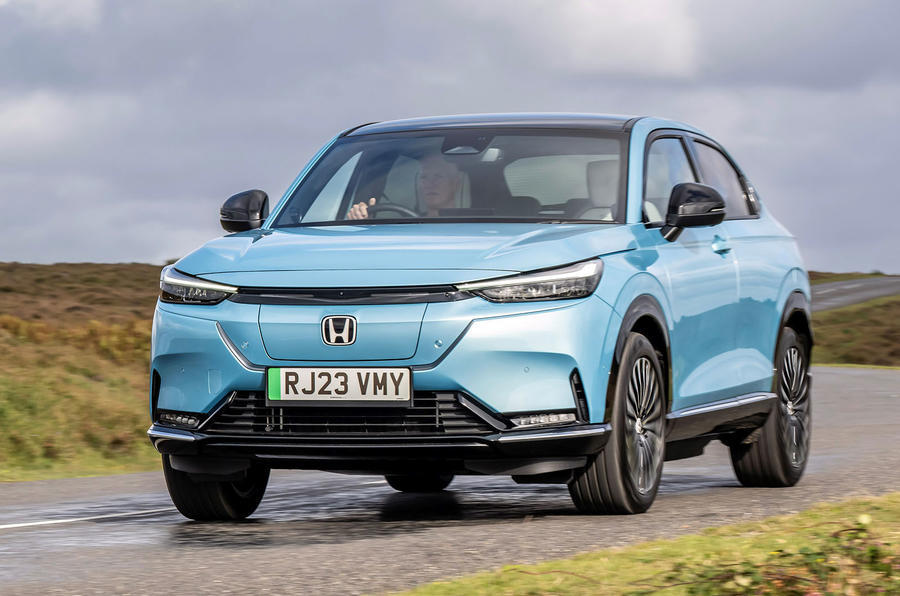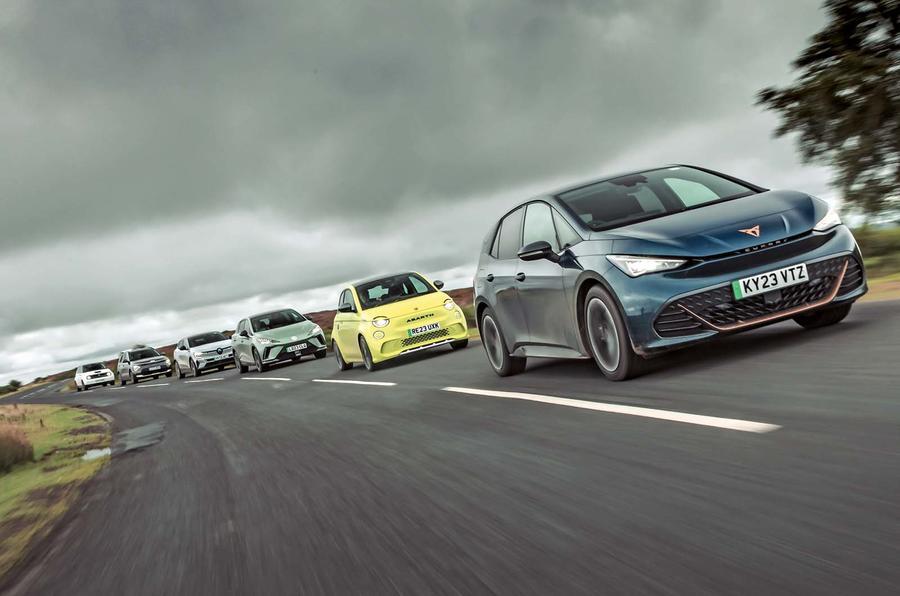EV sales have stumbled in recent months
Established manufacturers have found making electric cars profitable difficult as consumer demand remains tepid
The dash to electric vehicles has stumbled after consumer demand cooled in recent months, hurting the global car industry’s hunt for elusive profits.
“This EV journey for legacy OEMs has just been an unmitigated disaster so far,” said influential industry analyst Adam Jonas, who works for the bank Morgan Stanley, during the recent third-quarter earning call for supplier Aptiv.
The difficulties of profitability increasing EV production amid tepid consumer demand was a key theme during the most recent earning calls for car makers, suppliers and dealer groups, many of whom warned of trickier financial conditions ahead.
A slowdown in growth in EV sales in the US and to a lesser extent Europe were behind the concerns expressed by businesses.
General Motors setting the tone in its 24 October call, saying it had scrapped its target of 100,000 EV sales for the second half of 2023 and a cumulative 400,000 sales from 2022 to the first half of 2024, without setting new targets.
“We’re taking immediate steps to enhance the profitability of our EV portfolio and adjust to slowing near-term growth,” CEO Mary Barra said on the call, adding that the American firm was “moderating the pace” of EV acceleration in 2024 and 2025.
GM and Honda also recently announced that they had scrapped their plan to jointly develop affordable EVs.

Meanwhile, the Volkswagen Group warned analysts that EV demand wasn’t meeting its expectations.
“We currently face a general reluctance in the European market to buy battery-powered vehicles,” chief financial officer Arno Antlitz said on the group’s earnings call.
He revealed that the firm had sold 532,000 EVs in the first nine months of the year – 7.9% of its total sales – but warned that its EV order intake was “below our ambitious targets”.
Antlitz said the firm’s European EV order bank had halved from 300,000 a year ago to 150,000 now.
The bank UBS has warned that car makers need to prepare for a slowdown, particularly in 2024. It has cut its forecast for global EV share next year to 18% against its previous estimate of 20%.
“EVs have become a tough sell in Western markets,” UBS analyst Patrick Hummel said in a note.
In the UK, the Society of Motor Manufacturers and Traders (SMMT) has trimmed its EV market-share forecast for 2023 from 17.8% to 17.2% after growth slowed in the last couple of months.
The SMMT had called for renewed incentives for EVs in the UK government’s Autumn Statement, but such measures aren’t forthcoming.
Faced with lower-than-expected demand, car makers are adjusting their launch and production schedules for EVs, suppliers have warned.
BorgWarner, which makes electric motors, among other parts, cut its 2023 sales outlook by $300 million and adjusted its forecast for 2024 and 2025 in light of the consumer slowdown.
“We do believe this has the potential to impact industry-wide new-energy-vehicle production over the next couple of years,” CEO Frédéric Lissalde said on the American company’s earnings call.
Car makers are increasing discounts on EVs as they try to overcome build costs that are higher than for equivalent ICE cars, especially during a period of high interest rates.
American dealer group Penkse, which operates in the UK under the Sytner name, said it was making $2400 less in terms of gross profit on EVs than on ICE cars.
“We’ve got to discount them to move them and as the OEMs are putting tons of money on there to try [to] drive customer demand,” said Rich Shearing, COO for Penske’s North American operations.
Car makers in Europe and the US may be discounting more than in 2022, but they’ve so far avoided what one analyst – Mike Tyndall of the bank HSBC – called “suicide pricing” in China to stimulate sales amid cutthroat competition.
Tyndall was referring to the Volkswagen ID 3, which is being sold for the equivalent of around £20,000 in China, compared with at least £37,255 in the UK.
What’s the outlook for electric cars?

In the longer term, the outlook for EVs is better.
The reduction in battery material costs should bring about better pricing next year, Antlitz predicted. Growth was probably always going to be lumpy.
“Most of the players in the market expected it to be more linear, but if you look at a lot of developments in society, in nature, you don’t often find linear,” he said.
Ultimately, the message from the suppliers was that the path to EVs has been set and the dip is temporary.
“It’s our view that the headwinds we’re seeing are likely to be short to mid-term in nature,” said Lissalde. “The long-term trends towards electrification remains strong.”
The urge among governments worldwide to reduce carbon emissions that prompted legislation to mandate in favour of EVs in the first place still remains.
“All of this is tied to CO2 emission targets or national security,” said Aptiv CFO Joe Massaro. “If OEMs are uncomfortable or if the investment required is beyond that which they can absorb and be profitable, then ultimately I think they’re going to look for some [government] support.”
The problem for the car makers is that they need to keep up volumes to satisfy both environmental targets (for example the impending ZEV mandate in the UK) and avoid triggering penalties from suppliers, which have engineered clauses that call for payments if EV volumes fall below a certain level.
They have to continue to find ways to drive down EV costs or accept slimmer margins or even losses to get a core of sceptical buyers over the hump of EV acceptance.
Source: Autocar
